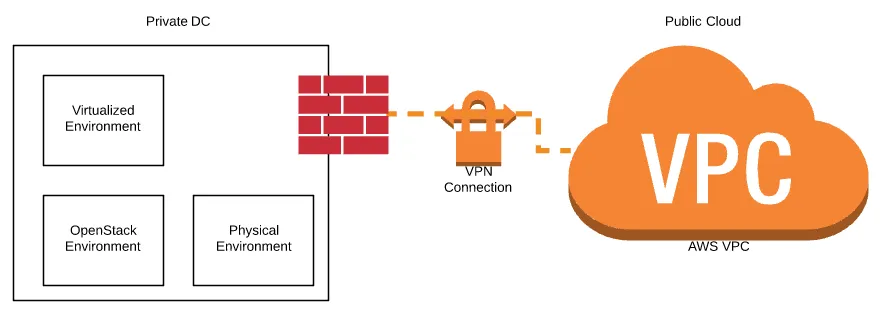
Hybrid Cloud for Architects
Alok Shrivastwa
- English
- ePUB (mobile friendly)
- Available on iOS & Android
Hybrid Cloud for Architects
Alok Shrivastwa
About This Book
Build your own hybrid cloud strategy with this comprehensive learning guide.About This Book• Build a hybrid cloud strategy for your organization with AWS and OpenStack • Leverage Hybrid Cloud to design a complex deployment pipeline• Learn to implement security and monitoring best practices with real-world examplesWho This Book Is ForThis book is targeted at cloud architects, cloud solution providers, DevOps engineers, or any working stakeholder who wants to learn about the hybrid cloud architecture. A basic understanding of public and private cloud is desirable.What You Will Learn• Learn the demographics and definitions of Hybrid Cloud• Understand the different architecture and design of Hybrid Cloud• Explore multi-cloud strategy and use it with your hybrid cloud• Implement a Hybrid Cloud using CMP / Common API's • Implement a Hybrid Cloud using Containers• Overcome various challenges and issues while working with your Hybrid Cloud • Understand how to monitor your Hybrid Cloud• Discover the security implications in the Hybrid CloudIn DetailHybrid cloud is currently the buzz word in the cloud world. Organizations are planning to adopt hybrid cloud strategy due to its advantages such as untested workloads, cloud-bursting, cloud service brokering and so on. This book will help you understand the dynamics, design principles, and deployment strategies of a Hybrid Cloud. You will start by understanding the concepts of hybrid cloud and the problems it solves as compared to a stand-alone public and private cloud. You will be delving into the different architecture and design of hybrid cloud. The book will then cover advanced concepts such as building a deployment pipeline, containerization strategy, and data storage mechanism. Next up, you will be able to deploy an external CMP to run a Hybrid cloud and integrate it with your OpenStack and AWS environments. You will also understand the strategy for designing a Hybrid Cloud using containerization and work with pre-built solutions like vCloud Air, VMware for AWS, and Azure Stack. Finally, the book will cover security and monitoring related best practices that will help you secure your cloud infrastructure. By the end of the book, you will be in a position to build a hybrid cloud strategy for your organization.Style and approachThis book follows a step-by-step, practical approach to deploying and implementing hybrid cloud architectures using AWS and OpenStack.
Frequently asked questions
Information
Hybrid Cloud Deployment – Architecture and Preparation

Getting started with the public cloud – AWS
- James Hamilton, VP & Distinguished Engineer, AWS, (Re:Invent 2016)
AWS terminology
Account
Region
Availability zones (AZ)
Virtual private cloud (VPC)
AWS services
| Service name | Category | Description |
| Virtual public cloud (VPC) | Networking | Allows us to create private networking and connectivity in ... |